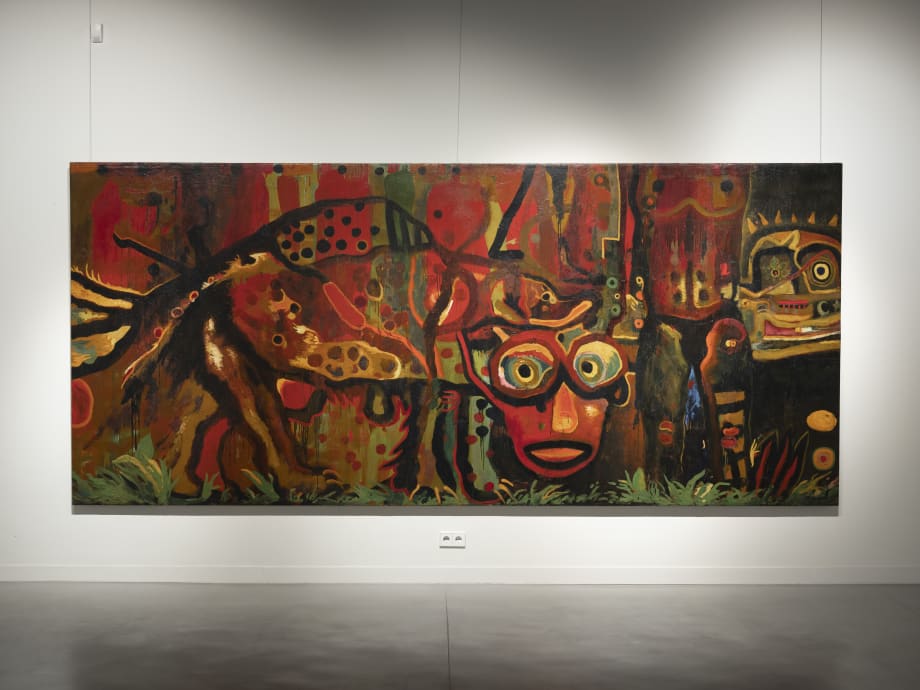"Mamuka Tsetskhladze formulated the concept of 'Rich Art'-an art whose non-commercialism, freedom and gigantic scale reject petty practicism while embodying true cultural value. Side-by-side, Karlo Kacharava's diary-paintings capture the same 'transitional, somewhat chaotic and diverse character' of late-Soviet Georgia."
- Ketevan Tsetskhladze, art historian, 2025
Rich Art & Diary Pages reunites two close friends—Mamuka Tsetskhladze (b. 1960) and Karlo Kacharava (1964–1994)—whose practices defined Georgia’s turbulent passage from late-Soviet twilight to the first years of independence. Drawn from the Cologne collection of gallerist Françoise Friedrich, the exhibition focuses on 1988–1991, a moment when Georgian artists could suddenly travel West yet carried the weight of a collapsing system at home. Large canvases, newspaper-based works and journal sheets trace an era in which “searching for new experimental forms” was both risk and lifeline.
At its heart towers Tsetskhladze’s Tiger (1988, 200 × 450 cm): a Neo-Expressionist beast painted in Tbilisi’s Marjanishvili Studio and first shown abroad at UNESCO Paris before disappearing for 37 years. The canvas embodies the artist’s doctrine of Rich Art—monumental, impractical, defiantly free. Nearby, Kacharava’s mixed-media pages—scribbled in Georgian and German, collaged with Cologne train tickets and newspaper clippings—extend the poetics of his personal diaries into pictorial space. Dedications begin with the word “FÜR”, offered to lovers, to Francesco Clemente, even to Anselm Kiefer, mapping a web of imagined conversations across borders.
Together the works stage an argument about transition itself. Tsetskhladze’s tiger bursts beyond the edge of the canvas; Kacharava’s text-swarmed sheets leave no white space untouched. Both gestures refuse containment—political, formal or geographic. By returning these fragments to Tbilisi, Art Foundation Anagi positions Rich Art and diary-painting not as footnotes to Western Neo-Expressionism but as distinct Georgian responses to upheaval, improvising new visual languages out of scarcity, exile and hope. The exhibition continues Anagi’s mission to reclaim exported histories and to show how the “chaotic, diverse” energies of the late 1980s still animate contemporary Georgian culture.
